THE HUMAN BODY IN DIGITAL SPACE
👁 1304 |
| 2022-03
body key bones as one blob
infos soon
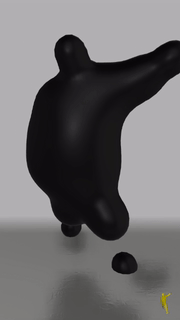
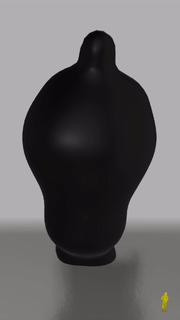
reactive body surface
infos soon
motion architecture
When visualizing body motion with the help of instantiated 3d objects in space, a temporal achitecture becomes apparent. The right example shows a static approach, whilst the left example a dynamic one, where the particle motion is influenced by the previous bone motion.
Inertia & Velocity
This sketch compares inertia and velocity physics when attached to body motion. Whilst the left sketch draws item size with items velocity, the right example draws current inertia amount in item size.
space, body, time
This sketch explores the relationship between the human body and its motion, time and space. Therefore the limb dimensions are extended to visualize spacial alignment that happen over time while certain body movements and guestures.
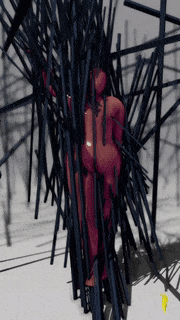
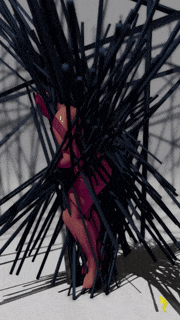
reactive aura
This sketch plays with body motion in space. Reactive elements float through space with a slight centric force. As the human body hits any element, the limbs velocity is applied to the element, that repels immedately. The variation in force constellation leads to interessting behaviour.
body motion in time
The concept of this sketch is a very minimalistic one. Each of the body halves are represented by one bezier curve, which is moved through space by the respective key body tracking points. The curves will dissapear after a certain interval, so the motion itself becomes visualized in a three dimensional way.
hypothetical limbs
This prototype uses key body tracking points to create hypothetical limbs that move along the actual body motion. These limbs are randomly attached by the algorithm with some kind of symmetry. The human body silhouette is obviously transformed with this method. Although, we can recognize many outfit attributes, we already know very well.
inertia based model
With the help of simple inertia and smoothing forumlars, it is possible to run into more dynamic volumes, that are capable to visualize the velocity of the body tracking points in a kind of „amplified“ way.
velocity based model
This velocity based model spawns new items nearby fast moving body tracking points. Each of those spawned items recieves the original velocity and a volume based on the magnitude of the velocity. The experiments differ in different base gravity and color.
dynamic clusters / bone focussed
This, more dynamic interpretation of bone motion is done through simple physics simulation algorithms between each element and specific key tracking points of the body. Each element has a specific volume, mass, drag and collision behaviour, so they are freely to move and therefore shape a very dynamic body siloutette formed by the body motion itself.
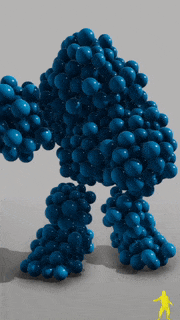
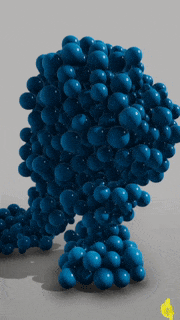
Symmetric bezier curves
This sketch builds a generative, symmetric constellation of bezier curves, that are connected to a random count of body motion points. These curves move along with the body motion and illustrate the outer, but more interesstingly, the inner bodyspace.
symmetric bone connection / experimental limbs
This sketch explores possible experimental limbs, that are attached to essential bodytracking nodes in space. Body symmetry is taken into account to ease the reception a bit further.
random bone connections
Randomly connecting key tracking points and moving them along the body motion produces irritating body perceptions. Playing with different shapes and volumes drives this perception play any further.
abstraction of body motion
To characterize complex body motion, we need a more abstract method to describe the limb constellations in motion. Therefore it makes sense to triangulate the body in upper and lower half to further go on with the rotation, scale and postion of those shapes.
advanced visualisation of body motion
The two sketches show the visualization of limb and bone motion through time and some cloth like items that run with its own physics based simulation.
limbs and bones
With a minimalistic visualization of tracked keypoints, the character of a body motion can be shown in wide variety of focuses. Both examples show a focus on tracked keypoints (bones) and interpolated limbs.
visualization of raw tracking data
Both examples show a raw visualization of tracked keypoints (bones), with data coming from realtime body tracking setup with a simple depth camera (AZURE / ASTRA).
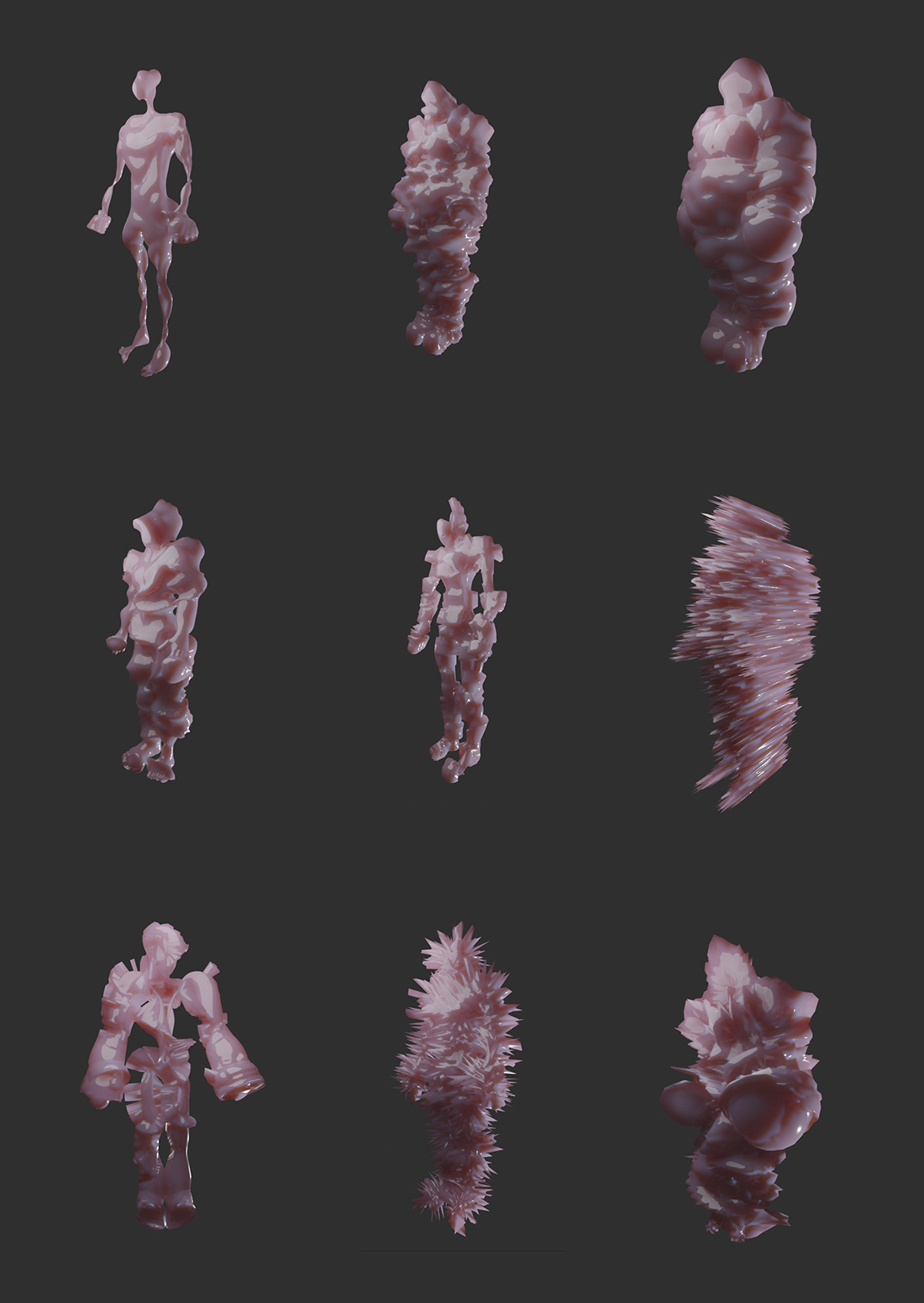
body key bones as one blob
infos soon


reactive body surface
infos soon
motion architecture
When visualizing body motion with the help of instantiated 3d objects in space, a temporal achitecture becomes apparent. The right example shows a static approach, whilst the left example a dynamic one, where the particle motion is influenced by the previous bone motion.
Inertia & Velocity
This sketch compares inertia and velocity physics when attached to body motion. Whilst the left sketch draws item size with items velocity, the right example draws current inertia amount in item size.
space, body, time
This sketch explores the relationship between the human body and its motion, time and space. Therefore the limb dimensions are extended to visualize spacial alignment that happen over time while certain body movements and guestures.


reactive aura
This sketch plays with body motion in space. Reactive elements float through space with a slight centric force. As the human body hits any element, the limbs velocity is applied to the element, that repels immedately. The variation in force constellation leads to interessting behaviour.
body motion in time
The concept of this sketch is a very minimalistic one. Each of the body halves are represented by one bezier curve, which is moved through space by the respective key body tracking points. The curves will dissapear after a certain interval, so the motion itself becomes visualized in a three dimensional way.
hypothetical limbs
This prototype uses key body tracking points to create hypothetical limbs that move along the actual body motion. These limbs are randomly attached by the algorithm with some kind of symmetry. The human body silhouette is obviously transformed with this method. Although, we can recognize many outfit attributes, we already know very well.
inertia based model
With the help of simple inertia and smoothing forumlars, it is possible to run into more dynamic volumes, that are capable to visualize the velocity of the body tracking points in a kind of „amplified“ way.
velocity based model
This velocity based model spawns new items nearby fast moving body tracking points. Each of those spawned items recieves the original velocity and a volume based on the magnitude of the velocity. The experiments differ in different base gravity and color.
dynamic clusters / bone focussed
This, more dynamic interpretation of bone motion is done through simple physics simulation algorithms between each element and specific key tracking points of the body. Each element has a specific volume, mass, drag and collision behaviour, so they are freely to move and therefore shape a very dynamic body siloutette formed by the body motion itself.


Symmetric bezier curves
This sketch builds a generative, symmetric constellation of bezier curves, that are connected to a random count of body motion points. These curves move along with the body motion and illustrate the outer, but more interesstingly, the inner bodyspace.
symmetric bone connection / experimental limbs
This sketch explores possible experimental limbs, that are attached to essential bodytracking nodes in space. Body symmetry is taken into account to ease the reception a bit further.
random bone connections
Randomly connecting key tracking points and moving them along the body motion produces irritating body perceptions. Playing with different shapes and volumes drives this perception play any further.
abstraction of body motion
To characterize complex body motion, we need a more abstract method to describe the limb constellations in motion. Therefore it makes sense to triangulate the body in upper and lower half to further go on with the rotation, scale and postion of those shapes.
advanced visualisation of body motion
The two sketches show the visualization of limb and bone motion through time and some cloth like items that run with its own physics based simulation.
limbs and bones
With a minimalistic visualization of tracked keypoints, the character of a body motion can be shown in wide variety of focuses. Both examples show a focus on tracked keypoints (bones) and interpolated limbs.
visualization of raw tracking data
Both examples show a raw visualization of tracked keypoints (bones), with data coming from realtime body tracking setup with a simple depth camera (AZURE / ASTRA).

